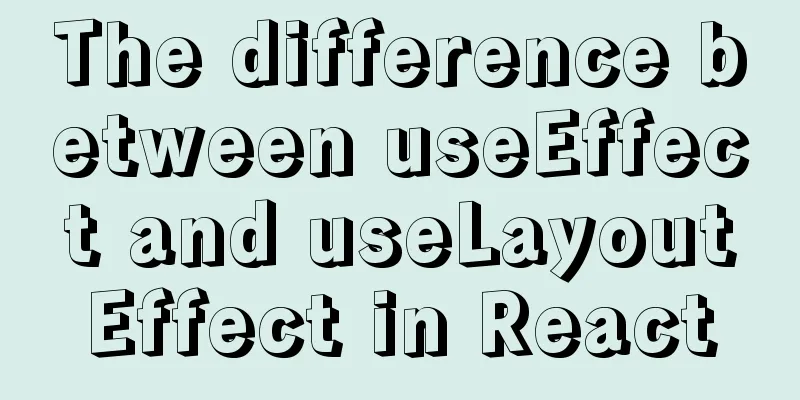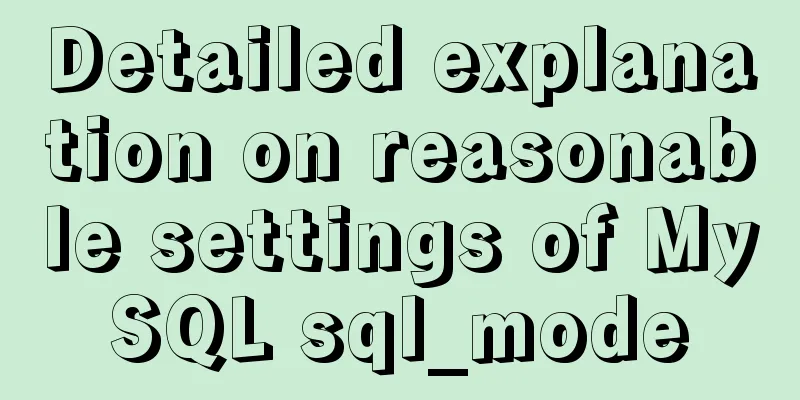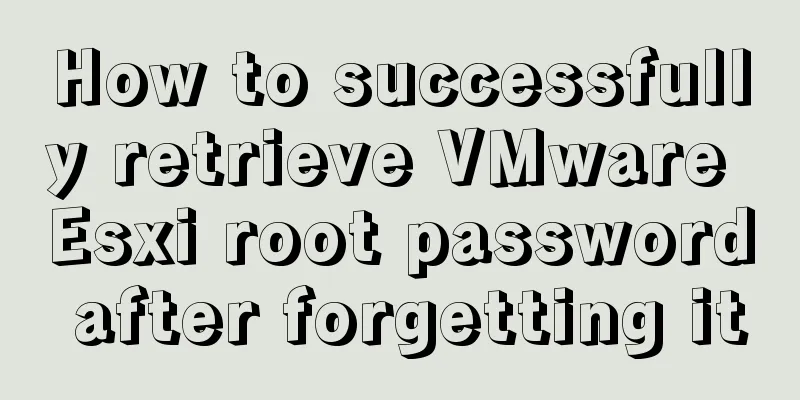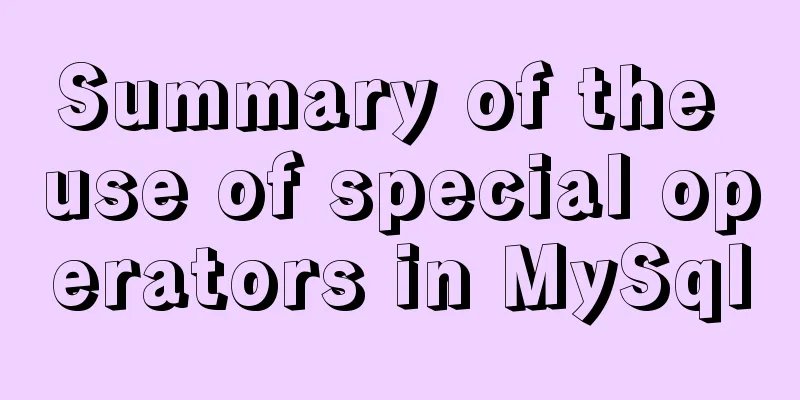Detailed explanation of how CocosCreator system events are generated and triggered
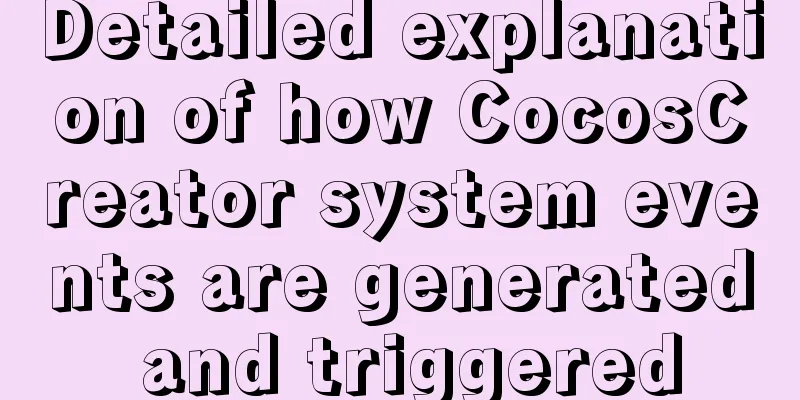
environment Cocos Creator 2.4 summaryModule Function Event monitoring mechanism should be an essential part of all games. Whether it is clicking a button or dragging an object, event monitoring and distribution are essential. Related documents
Among them, CCGame and CCInputManager are both involved in registering events, but they are responsible for different parts. Source code analysisHow do events get to the engine (from the browser)? To answer this question, we must understand where the interaction between the engine and the browser comes from. CCGame.js
// Initialize event system_initEvents: function () {
var win = window, hiddenPropName;
//_ register system events
// Register system events, here we call the CCInputManager method if (this.config.registerSystemEvent)
_cc.inputManager.registerSystemEvent(this.canvas);
// document.hidden means the page is hidden, the following if is used to handle browser compatibility if (typeof document.hidden !== 'undefined') {
hiddenPropName = "hidden";
} else if (typeof document.mozHidden !== 'undefined') {
hiddenPropName = "mozHidden";
} else if (typeof document.msHidden !== 'undefined') {
hiddenPropName = "msHidden";
} else if (typeof document.webkitHidden !== 'undefined') {
hiddenPropName = "webkitHidden";
}
// Is the current page hidden? var hidden = false;
//Callback when the page is hidden and emits the game.EVENT_HIDE event function onHidden () {
if (!hidden) {
hidden = true;
game.emit(game.EVENT_HIDE);
}
}
//_ In order to adapt the most of platforms the onshow API.
// To adapt to the onshow API of most platforms. It should refer to the parameter passing part...
// Callback when the page is visible and emit game.EVENT_SHOW event function onShown (arg0, arg1, arg2, arg3, arg4) {
if (hidden) {
hidden = false;
game.emit(game.EVENT_SHOW, arg0, arg1, arg2, arg3, arg4);
}
}
// If the browser supports hidden properties, register the page visual state change event if (hiddenPropName) {
var changeList = [
"visibilitychange",
"mozvisibilitychange",
"msvisibilitychange",
"webkitvisibilitychange",
"qbrowserVisibilityChange"
];
// Loop through the events in the list above for compatibility // After the hidden state changes, call the onHidden/onShown callback function based on the visible state for (var i = 0; i < changeList.length; i++) {
document.addEventListener(changeList[i], function (event) {
var visible = document[hiddenPropName];
//_QQ App
visible = visible || event["hidden"];
if (visible)
onHidden();
else
onShown();
});
}
}
// Some compatibility codes about changes in the page's visual state are omitted here // Register hide and show events, and pause or restart the main logic of the game.
this.on(game.EVENT_HIDE, function () {
game.pause();
});
this.on(game.EVENT_SHOW, function () {
game.resume();
});
} In fact, there is only a little bit of core code... In order to maintain compatibility with various platforms,
Let's take a look at CCInputManager. CCInputManager.js
// Register system event element is canvas
registerSystemEvent (element) {
if(this._isRegisterEvent) return;
// Already registered, return directly
this._glView = cc.view;
let selfPointer = this;
let canvasBoundingRect = this._canvasBoundingRect;
// Listen for resize events and modify this._canvasBoundingRect
window.addEventListener('resize', this._updateCanvasBoundingRect.bind(this));
let prohibition = sys.isMobile;
let supportMouse = ('mouse' in sys.capabilities);
// Whether to support touchlet supportTouches = ('touches' in sys.capabilities);
// Omitted the registration code for mouse events //_register touch event
// Register touch events if (supportTouches) {
// Event map
let _touchEventsMap = {
"touchstart": function (touchesToHandle) {
selfPointer.handleTouchesBegin(touchesToHandle);
element.focus();
},
"touchmove": function (touchesToHandle) {
selfPointer.handleTouchesMove(touchesToHandle);
},
"touchend": function (touchesToHandle) {
selfPointer.handleTouchesEnd(touchesToHandle);
},
"touchcancel": function (touchesToHandle) {
selfPointer.handleTouchesCancel(touchesToHandle);
}
};
// Traverse the map to register events let registerTouchEvent = function (eventName) {
let handler = _touchEventsMap[eventName];
// Register events to canvas element.addEventListener(eventName, (function(event) {
if (!event.changedTouches) return;
let body = document.body;
// Calculate the offset canvasBoundingRect.adjustedLeft = canvasBoundingRect.left - (body.scrollLeft || window.scrollX || 0);
canvasBoundingRect.adjustedTop = canvasBoundingRect.top - (body.scrollTop || window.scrollY || 0);
// Get the touch point from the event and call the callback function handler(selfPointer.getTouchesByEvent(event, canvasBoundingRect));
// Stop event bubbling event.stopPropagation();
event.preventDefault();
}), false);
};
for (let eventName in _touchEventsMap) {
registerTouchEvent(eventName);
}
}
// Modify the property to indicate that event registration has been completed this._isRegisterEvent = true;
}In the code, the main thing done is to register a series of native events such as touchstart. In the event callback, the functions in selfPointer(=this) are called for processing. Here we use the touchstart event as an example, namely the handleTouchesBegin function.
// Handle the touchstart event handleTouchesBegin (touches) {
let selTouch, index, curTouch, touchID,
handleTouches = [], locTouchIntDict = this._touchesIntegerDict,
now = sys.now();
// Traverse touch points for (let i = 0, len = touches.length; i < len; i ++) {
// Current touch point selTouch = touches[i];
// Touch point id
touchID = selTouch.getID();
// The position of the touch point in the touch point list (this._touches) index = locTouchIntDict[touchID];
// If the index is not obtained, it means it is a new touch point (just pressed)
if (index == null) {
// Get an unused index
let unusedIndex = this._getUnUsedIndex();
// Cannot obtain, throw an error. It may be that the maximum number of supported touch points has been exceeded.
if (unusedIndex === -1) {
cc.logID(2300, unusedIndex);
continue;
}
//_curTouch = this._touches[unusedIndex] = selTouch;
//Store touch points curTouch = this._touches[unusedIndex] = new cc.Touch(selTouch._point.x, selTouch._point.y, selTouch.getID());
curTouch._lastModified = now;
curTouch._setPrevPoint(selTouch._prevPoint);
locTouchIntDict[touchID] = unusedIndex;
// Add to the list of touch points that need to be processed handleTouches.push(curTouch);
}
}
// If there is a new contact, generate a touch event and distribute it to the eventManager
if (handleTouches.length > 0) {
// This method will process the position of the touch point according to the scale this._glView._convertTouchesWithScale(handleTouches);
let touchEvent = new cc.Event.EventTouch(handleTouches);
touchEvent._eventCode = cc.Event.EventTouch.BEGAN;
eventManager.dispatchEvent(touchEvent);
}
}, In the function, part of the code is used to filter whether there are new touch points, and the other part is used to process and distribute events (if necessary). How do events get from the engine to the nodes?The work of passing events to nodes mainly occurs in the CCEventManager class. Includes storage event listeners, distribution events, etc. Let's start with _dispatchTouchEvent as the entry point. CCEventManager.js
// Dispatching events_dispatchTouchEvent: function (event) {
// Sort touch listeners // TOUCH_ONE_BY_ONE: touch event listener type, touch points will be dispatched one by one // TOUCH_ALL_AT_ONCE: touch points will be dispatched all at once this._sortEventListeners(ListenerID.TOUCH_ONE_BY_ONE);
this._sortEventListeners(ListenerID.TOUCH_ALL_AT_ONCE);
// Get the listener list var oneByOneListeners = this._getListeners(ListenerID.TOUCH_ONE_BY_ONE);
var allAtOnceListeners = this._getListeners(ListenerID.TOUCH_ALL_AT_ONCE);
//_ If there aren't any touch listeners, return directly.
// If there is no listener, just return.
if (null === oneByOneListeners && null === allAtOnceListeners)
return;
// Store variables var originalTouches = event.getTouches(), mutableTouches = cc.js.array.copy(originalTouches);
var oneByOneArgsObj = {event: event, needsMutableSet: (oneByOneListeners && allAtOnceListeners), touches: mutableTouches, selTouch: null};
//
//_ process the target handlers 1st
// Won't flip. The feeling is to handle single touch events first.
if (oneByOneListeners) {
// Traverse the contacts and distribute them in sequence for (var i = 0; i < originalTouches.length; i++) {
event.currentTouch = originalTouches[i];
event._propagationStopped = event._propagationImmediateStopped = false;
this._dispatchEventToListeners(oneByOneListeners, this._onTouchEventCallback, oneByOneArgsObj);
}
}
//
//_ process standard handlers 2nd
// Won't flip. It feels like the second thing is to handle multi-touch events (dispatching all at once)
if (allAtOnceListeners && mutableTouches.length > 0) {
this._dispatchEventToListeners(allAtOnceListeners, this._onTouchesEventCallback, {event: event, touches: mutableTouches});
if (event.isStopped())
return;
}
// Update the touch listener list, mainly to remove and add listeners this._updateTouchListeners(event);
}, The main things done in the function are sorting, distributing to the registered listener list, and updating the listener list. Nothing special. You may wonder, why is there such an abrupt order? Oh, this is the most important thing! For the role of sorting, see the official document on the transmission of touch events. It is this sorting that realizes the contact point attribution problem between nodes of different levels/different zIndex. The sorting will be mentioned later, it is amazing.
/**
* Distribute events to listener lists * @param {*} listeners listener list * @param {*} onEvent event callback * @param {*} eventOrArgs event/parameters */
_dispatchEventToListeners: function (listeners, onEvent, eventOrArgs) {
//Do you need to stop distributing? var shouldStopPropagation = false;
// Get a fixed priority listener (system event)
var fixedPriorityListeners = listeners.getFixedPriorityListeners();
// Get the listener with scene graph priority (normally the listeners we add are here)
var sceneGraphPriorityListeners = listeners.getSceneGraphPriorityListeners();
/**
* Listener triggering order:
* Fixed priority level < 0
* Scene graph priority * Fixed priority > 0
*/
var i = 0, j, selListener;
if (fixedPriorityListeners) { //_ priority < 0
if (fixedPriorityListeners.length !== 0) {
// Traverse the listeners to distribute events for (; i < listeners.gt0Index; ++i) {
selListener = fixedPriorityListeners[i];
// If the listener is activated and not paused and has been registered with the event manager // The last onEvent is to use the _onTouchEventCallback function to distribute events to the listener // onEvent will return a boolean, indicating whether it is necessary to continue to distribute events to subsequent listeners. If true, stop distributing if (selListener.isEnabled() && !selListener._isPaused() && selListener._isRegistered() && onEvent(selListener, eventOrArgs)) {
shouldStopPropagation = true;
break;
}
}
}
}
//Omit the trigger codes of the other two priorities}, In the function, the events are distributed one by one by traversing the listener list, and whether to continue to distribute is determined based on the return value of onEvent. Generally, after a touch event is received by a node, it stops being dispatched. Then the logic of bubbling distribution will be performed from this node. This is also a key point, that is, only one node will respond to the touch event. As for the priority of the node, it is the sorting algorithm mentioned above.
// Touch event callback. Distribute events to listeners_onTouchEventCallback: function (listener, argsObj) {
//_ Skip if the listener was removed.
// Skip if the listener has been removed.
if (!listener._isRegistered())
return false;
var event = argsObj.event, selTouch = event.currentTouch;
event.currentTarget = listener._node;
// isClaimed: listener whether to claim the event var isClaimed = false, removedIdx;
var getCode = event.getEventCode(), EventTouch = cc.Event.EventTouch;
// If the event is a touch start event if (getCode === EventTouch.BEGAN) {
// If multi-touch is not supported and there is already a touch point if (!cc.macro.ENABLE_MULTI_TOUCH && eventManager._currentTouch) {
// If the touch point has been claimed by a node and the node is active in the node tree, the event will not be processed let node = eventManager._currentTouchListener._node;
if (node && node.activeInHierarchy) {
return false;
}
}
// If the listener has a corresponding event if (listener.onTouchBegan) {
// Try to distribute to the listener, and return a boolean to indicate whether the listener claims the event isClaimed = listener.onTouchBegan(selTouch, event);
// If the event is claimed and the listener is registered, save some data if (isClaimed && listener._registered) {
listener._claimedTouches.push(selTouch);
eventManager._currentTouchListener = listener;
eventManager._currentTouch = selTouch;
}
}
}
// If the listener has already claimed a touch and the current touch is claimed by the current listener else if (listener._claimedTouches.length > 0
&& ((removedIdx = listener._claimedTouches.indexOf(selTouch)) !== -1)) {
// Take it home directly isClaimed = true;
// If multi-touch is not supported and there is a touch point and it is not the current touch point, do not process the event if (!cc.macro.ENABLE_MULTI_TOUCH && eventManager._currentTouch && eventManager._currentTouch !== selTouch) {
return false;
}
// Distribute events to listeners // When ENDED or CANCELED, you need to clean up the contacts in the listener and event manager if (getCode === EventTouch.MOVED && listener.onTouchMoved) {
listener.onTouchMoved(selTouch, event);
} else if (getCode === EventTouch.ENDED) {
if (listener.onTouchEnded)
listener.onTouchEnded(selTouch, event);
if (listener._registered)
listener._claimedTouches.splice(removedIdx, 1);
eventManager._clearCurTouch();
} else if (getCode === EventTouch.CANCELED) {
if (listener.onTouchCancelled)
listener.onTouchCancelled(selTouch, event);
if (listener._registered)
listener._claimedTouches.splice(removedIdx, 1);
eventManager._clearCurTouch();
}
}
//_ If the event was stopped, return directly.
// If the event has been stopped, return directly (call stopPropagationImmediate() on the event, etc.)
if (event.isStopped()) {
eventManager._updateTouchListeners(event);
return true;
}
// If the event is claimed and the listener eats the event (x) (it does not need to be passed on, the default is false, but it is true in Node's touch series events)
if (isClaimed && listener.swallowTouches) {
if (argsObj.needsMutableSet)
argsObj.touches.splice(selTouch, 1);
return true;
}
return false;
}, The main function is to distribute events and perform compatibility processing for multiple touch points. What is important is the return value. When the event is claimed by the listener, true is returned to prevent the event from being passed on. Where is the event registered?For the on function called on the node, the relevant code is naturally in CCNode. Let's take a look at what the on function does.
/**
* Register a callback function of the specified type on the node * @param {*} type event type * @param {*} callback callback function * @param {*} target target (used to bind this)
* @param {*} useCapture registered in the capture phase */
on (type, callback, target, useCapture) {
// Is it a system event (mouse, touch)?
let forDispatch = this._checknSetupSysEvent(type);
if (forDispatch) {
//Register event return this._onDispatch(type, callback, target, useCapture);
}
// Omit non-system events, including position changes, size changes, etc.
}, The official comments are quite long, so I will write a simplified version. In short, it is used to register a callback function for an event.
// Register distribution event_onDispatch (type, callback, target, useCapture) {
//_ Accept also patameters like: (type, callback, useCapture)
// You can also receive parameters like this: (type, callback, useCapture)
// Parameter compatibility processing if (typeof target === 'boolean') {
useCapture = target;
target = undefined;
}
else useCapture = !!useCapture;
// If there is no callback function, report an error and return.
if (!callback) {
cc.errorID(6800);
return;
}
// Get different listeners based on useCapture.
var listeners = null;
if (useCapture) {
listeners = this._capturingListeners = this._capturingListeners || new EventTarget();
}
else {
listeners = this._bubblingListeners = this._bubblingListeners || new EventTarget();
}
// If the same callback event has been registered, no processing will be performed if ( !listeners.hasEventListener(type, callback, target) ) {
// Register events to listeners listeners.on(type, callback, target);
// Save this to the target's __eventTargets array, which is used to call the targetOff function from the target to clear the listener.
if (target && target.__eventTargets) {
target.__eventTargets.push(this);
}
}
return callback;
}, The node will hold two listeners, one is _capturingListeners and the other is _bubblingListeners. What is the difference? The former is registered in the capture phase, and the latter is in the bubbling phase. The more specific differences will be discussed later. event-target.js(EventTarget)
//_Register a specific event type callback for the event target. Events of this type should be emitted using `emit`.
proto.on = function (type, callback, target, once) {
// If no callback function is passed, report an error and return
if (!callback) {
cc.errorID(6800);
return;
}
// If the callback already exists, do not process if ( !this.hasEventListener(type, callback, target) ) {
//Register event this.__on(type, callback, target, once);
if (target && target.__eventTargets) {
target.__eventTargets.push(this);
}
}
return callback;
}; At the end, there is another on... From callbacks-invoker.js(CallbacksInvoker)
//_ Event adding management proto.on = function (key, callback, target, once) {
// Get the callback list corresponding to the event let list = this._callbackTable[key];
// If it does not exist, get one from the pool if (!list) {
list = this._callbackTable[key] = callbackListPool.get();
}
// Save callback related information let info = callbackInfoPool.get();
info.set(callback, target, once);
list.callbackInfos.push(info);
}; It’s finally over! Among them, callbackListPool and callbackInfoPool are both js.Pool objects, which is an object pool. The callback functions are ultimately stored in _callbackTable. How is the event triggered?Before understanding triggering, let's take a look at the triggering order. Let’s take a look at an official comment first.
What does it mean? The fourth parameter of the on function, useCapture, if true, the event will be registered in the capture phase, that is, it can be called earliest.
// Check if it is a system event_checknSetupSysEvent (type) {
// Do you need to add a new listener? let newAdded = false;
// Whether distribution is needed (required for system events)
let forDispatch = false;
// If the event is a touch event if (_touchEvents.indexOf(type) !== -1) {
// If there is no touch event listener, create a new one if (!this._touchListener) {
this._touchListener = cc.EventListener.create({
event: cc.EventListener.TOUCH_ONE_BY_ONE,
swallowTouches: true,
owner: this,
mask: _searchComponentsInParent(this, cc.Mask),
onTouchBegan: _touchStartHandler,
onTouchMoved: _touchMoveHandler,
onTouchEnded: _touchEndHandler,
onTouchCancelled: _touchCancelHandler
});
// Add the listener to the eventManager
eventManager.addListener(this._touchListener, this);
newAdded = true;
}
forDispatch = true;
}
// The omitted event is the code for the mouse event, which is similar to the touch event // If a listener is added and the current node is not active if (newAdded && !this._activeInHierarchy) {
// After a while, if the node is still not active, suspend the event delivery of the node.
cc.director.getScheduler().schedule(function () {
if (!this._activeInHierarchy) {
eventManager.pauseTarget(this);
}
}, this, 0, 0, 0, false);
}
return forDispatch;
}, What's the point? In the line
// Touch start event handler var _touchStartHandler = function (touch, event) {
var pos = touch.getLocation();
var node = this.owner;
// If the touch point is within the node range, the event is triggered and true is returned, indicating that I have taken the event!
if (node._hitTest(pos, this)) {
event.type = EventType.TOUCH_START;
event.touch = touch;
event.bubbles = true;
//Distribute to this nodenode.dispatchEvent(event);
return true;
}
return false;
};It's very simple. Get the contact point and determine whether the contact point falls within the node. If so, distribute it!
//_ Distribute events into the event stream.
dispatchEvent (event) {
_doDispatchEvent(this, event);
_cachedArray.length = 0;
},
//Distribute events function _doDispatchEvent (owner, event) {
var target, i;
event.target = owner;
//_ Event.CAPTURING_PHASE
// Capture phase_cachedArray.length = 0;
// Get the nodes in the capture phase and store them in _cachedArray
owner._getCapturingTargets(event.type, _cachedArray);
//_ capturing
event.eventPhase = 1;
//Traverse from the end to the beginning (that is, from the root node to the parent node of the target node)
for (i = _cachedArray.length - 1; i >= 0; --i) {
target = _cachedArray[i];
// If the target node registers a listener for the capture phase if (target._capturingListeners) {
event.currentTarget = target;
//_ fire event
// Process the event on the target node target._capturingListeners.emit(event.type, event, _cachedArray);
//_ check if propagation stopped
// If the event has stopped being delivered, return
if (event._propagationStopped) {
_cachedArray.length = 0;
return;
}
}
}
// Clear_cachedArray
_cachedArray.length = 0;
//_ Event.AT_TARGET
//_ checks if destroyed in capturing callbacks
// The target node's own phase event.eventPhase = 2;
event.currentTarget = owner;
// If the owner has registered a listener for the capture phase, process the event if (owner._capturingListeners) {
owner._capturingListeners.emit(event.type, event);
}
// If the event is not stopped and the propagation listener is registered, process the event if (!event._propagationImmediateStopped && owner._bubblingListeners) {
owner._bubblingListeners.emit(event.type, event);
}
// If the event is not stopped and the event needs to be bubbled (default true)
if (!event._propagationStopped && event.bubbles) {
//_ Event.BUBBLING_PHASE
// Bubbling stage // Get the node in the bubbling stage owner._getBubblingTargets(event.type, _cachedArray);
//_ propagate
event.eventPhase = 3;
// Traverse from beginning to end (from parent node to root node), the triggering logic is consistent with the capture phase for (i = 0; i < _cachedArray.length; ++i) {
target = _cachedArray[i];
if (target._bubblingListeners) {
event.currentTarget = target;
//_ fire event
target._bubblingListeners.emit(event.type, event);
//_ check if propagation stopped
if (event._propagationStopped) {
_cachedArray.length = 0;
return;
}
}
}
}
// Clear_cachedArray
_cachedArray.length = 0;
} I wonder if you have a better understanding of the event triggering sequence after reading this?
_getCapturingTargets (type, array) {
// Start from the parent node var parent = this.parent;
// If the parent node is not empty (the parent node of the root node is empty)
while (parent) {
// If the node has a listener in the capture phase and a listening event of the corresponding type, add the node to the array if (parent._capturingListeners && parent._capturingListeners.hasEventListener(type)) {
array.push(parent);
}
// Set the node to its parent node parent = parent.parent;
}
}, A bottom-up traversal adds the nodes that meet the conditions along the way to the array, and then you get all the nodes that need to be processed! callbacks-invoker.js
proto.emit = function (key, arg1, arg2, arg3, arg4, arg5) {
// Get the event list const list = this._callbackTable[key];
// If the event list exists if (list) {
// Is the list.isInvoking event being triggered const rootInvoker = !list.isInvoking;
list.isInvoking = true;
// Get the callback list and traverse const infos = list.callbackInfos;
for (let i = 0, len = infos.length; i < len; ++i) {
const info = infos[i];
if (info) {
let target = info.target;
let callback = info.callback;
// If the callback function is registered with once, cancel this function first if (info.once) {
this.off(key, callback, target);
}
// If target is passed, use call to ensure that this points to the correct if (target) {
callback.call(target, arg1, arg2, arg3, arg4, arg5);
}
else {
callback(arg1, arg2, arg3, arg4, arg5);
}
}
}
// If the current event is not being triggered if (rootInvoker) {
list.isInvoking = false;
// If there are canceled callbacks, call the purgeCanceled function to filter the removed callbacks and compress the array if (list.containCanceled) {
list.purgeCanceled();
}
}
}
};The core is to obtain a list of callback functions based on the event, traverse the calls, and finally perform a recycling as needed. That’s all! ConclusionAdd some interesting listener sorting algorithm In the previous content, the _sortEventListeners function is mentioned, which is used to sort the listeners according to the trigger priority. I think this algorithm is quite interesting, and I would like to share it with you.
If you want to prioritize, how should you do it? Let p1 and p2 be equal to AB respectively. Go up: A = A.parent
There is a lot of words written, and here is the code, concise and powerful!
// Sorting algorithm for scene graph priority listeners // Returning -1 (negative number) means l1 takes precedence over l2, returning a positive number means the opposite, 0 means they are equal_sortEventListenersOfSceneGraphPriorityDes: function (l1, l2) {
// Get the node where the listener is located let node1 = l1._getSceneGraphPriority(),
node2 = l2._getSceneGraphPriority();
// If listener 2 is empty or node 2 is empty or node 2 is not active or node 2 is the root node, l1 takes precedence if (!l2 || !node2 || !node2._activeInHierarchy || node2._parent === null)
return -1;
// Same as above else if (!l1 || !node1 || !node1._activeInHierarchy || node1._parent === null)
return 1;
// Use p1 p2 to temporarily store node 1 and node 2
// ex: I guess it means whether an exchange occurs (exchange)
let p1 = node1, p2 = node2, ex = false;
// If the parent nodes of p1 and p2 are not equal, trace back to the source while (p1._parent._id !== p2._parent._id) {
// If the grandparent node of p1 is empty (the parent node of p1 is the root node), ex is set to true and p1 points to node 2. Otherwise p1 points to its parent node p1 = p1._parent._parent === null ? (ex = true) && node2 : p1._parent;
p2 = p2._parent._parent === null ? (ex = true) && node1 : p2._parent;
}
// If p1 and p2 point to the same node, that is, nodes 1 and 2 have a parent-child relationship, that is, case 3
if (p1._id === p2._id) {
// If p1 points to node 2, l1 takes precedence. Otherwise l2 takes precedence if (p1._id === node2._id)
return -1;
if (p1._id === node1._id)
return 1;
}
// Note: At this time, the parent nodes of p1 and p2 are the same // If ex is true, then nodes 1 and 2 have no parent-child relationship, that is, case 2
// If ex is false, nodes 1 and 2 have the same parent node, which is case 1
return ex ? p1._localZOrder - p2._localZOrder : p2._localZOrder - p1._localZOrder;
},Summarize The game starts with CCGame, which calls CCInputManager and CCEventManager to register events. In the subsequent interactions, the engine's callback calls the listeners in CCEventManager, and then CCNode processes the events. If it hits, it is passed to the event list stored in EventTarget, and the journey is completed. The above is a detailed explanation of how CocosCreator system events are generated and triggered. For more information about the generation and triggering of CocosCreator system events, please pay attention to other related articles on 123WORDPRESS.COM! You may also be interested in:
|
<<: MYSQL implements sample code to prevent duplicate addition when adding shopping cart
>>: Sample code for converting video using ffmpeg command line
Recommend
How to express relative paths in Linux
For example, if your current path is /var/log and...
Several things to note when making a web page
--Homepage backup 1.txt text 2. Scan the image 3. ...
Summary of common functions and usage methods of WeChat applet development
Here, I have mainly sorted out some commonly used...
Drop-down menu implemented by HTML+CSS3+JS
Achieve results html <div class="containe...
DIV and image horizontal and vertical centering compatible with multiple browsers
The first type: full CSS control, layer floating ...
What is table partitioning and partitioning? MySql database partitioning and table partitioning method
1. Why do we need to divide tables and partitions...
Analysis of MySQL general query log and slow query log
The logs in MySQL include: error log, binary log,...
HTML table tag tutorial (19): row tag
The attributes of the <TR> tag are used to ...
Detailed explanation of JavaScript onblur and onfocus events
In HTML pages, visual elements such as buttons an...
Example of using nested html pages (frameset usage)
Copy code The code is as follows: <!DOCTYPE ht...
How to query or obtain images in a private registry
Docker queries or obtains images in a private reg...
Angular environment construction and simple experience summary
Introduction to Angular Angular is an open source...
HTML text escape tips
Today I saw a little trick for HTML text escaping ...
Introduction to vim plugin installation under Linux system
Table of contents Install vim plugin manager Add ...
JavaScript to achieve Taobao product image switching effect
JavaScript clothing album switching effect (simil...

